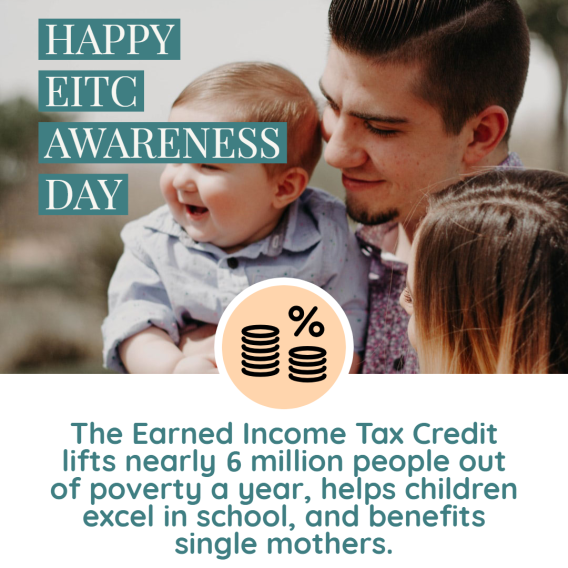By Madeline Youngren, 2020 Housing Intern
Updated September 24, 2021
Economic Impact Payments (EIPs) or “stimulus checks” have been a lifeline for many people with low incomes who have received them. Unfortunately, many people experiencing homelessness may miss out on the payments because they need to take action to get them, either by filing a tax return (if they have a filing requirement) or submitting their information to GetCTC.org.
Outreach and direct support to people experiencing homelessness is imperative to help ensure those most marginalized receive these payments. This guide can help you understand the barriers to getting the payment and what you can do to help.
Understanding Homelessness in America & COVID-19
On any given night prior to the pandemic, over 500,000 people were experiencing homelessness. Black, Latino, and Native American people are disproportionately represented. Our nation’s long history of racist and discriminatory housing policies, practices, and programs have led to the overrepresentation of people of color in the homeless system.
Risks of eviction and homelessness have increased due to the pandemic as housing hardships show no sign of easing. In early July, 2020 1 in 5 adults (13.8 million) renting homes reported that they were behind on rent with Black and Latino renters reporting the greatest difficulty paying. People with low incomes have been especially hard hit by the COVID-19 crisis, as the greatest proportion of consequential job losses have occurred in industries that pay low average wages.
Unfortunately, those most affected by the COVID-19 crisis face the biggest barriers to accessing their payments. Outreach is critical to help ensure everyone gets the help they need.
Building Outreach Capacity through Partnerships and Other Resources
Assess your organization’s outreach capacity and what type of roles you can fill. Does your organization have the capacity to assist, refer, or notify individuals who are seeking help with the payments?
Once you know your capacity, reach out to other local organizations to see what outreach is already happening and how you can plug in. Start by contacting your local United Way.
On-the-ground support is the most impactful at this time. Volunteer Income Tax Assistance (VITA) sites which provide free, quality tax services across the country are typically a resource for in-person tax support. Due to COVID-19, most VITA sites shut down or transitioned to remote support.
If you cannot provide on-the-ground support, share other available resources. United Way’s 211 Helpline answers questions about eligibility and help callers find a local VITA site.
Code for America’s Get Your Refund Service is a free, mobile-friendly platform that uses VITA volunteers to help people file tax returns to get their stimulus checks and other tax refunds if eligible. Alternatively, if people don’t have a filing requirement, they can use GetCTC.org to file a simplified tax return and get all three of their stimulus checks. People don’t need to be eligible for the Child Tax Credit to use GetCTC to get their stimulus checks.
Navigating Barriers
Here are five challenges people experiencing homelessness face to getting their stimulus payments and suggestions to help address them.
1. Computer or internet access
Use GetCTC.org (if you don’t have a filing requirement) to claim your stimulus checks requires Internet access. If you want to file a tax return, doing so electronically is the safest and most efficient way to ensure it is processed by the IRS. While a paper return can be mailed, the IRS continues to work through a backlog of mailed documents sent in 2020. Many public libraries that provide internet and computer access remain closed or have limited operations due to the COVID-19 pandemic.
If local free tax filing options are not available, use a cell phone as a Wi-Fi hotspot to provide in-person computer access to navigate GetCTC.org or free tax filing software such as MyFreeTaxes or companies available through IRS Free File. In 2020, in Cleveland, Ohio, the Northeast Ohio Coalition for the Homeless and West Side Catholic Center organized volunteers with internet-accessible devices to perform outreach to homeless communities. Advocates at Be a Blessing Birmingham partnered with Woke Vote to assist people using iPads and laptops.
2. Email address
If you don’t have a filing requirement, you can use a phone number or email to submit your information to GetCTC.org. If people don’t have a phone, they must use an email address. An email is also used when filing a tax return to establish an account and verify identity. Help people establish an email address. Gmail, Yahoo! Mail, or AOL are free options (Yahoo! Mail and AOL requires you to verify a phone number).
3. Permanent address
People experiencing homelessness often lack a consistent address. Partner with an organization that offers their mailing address to receive the payment. You can also use a P.O. box.
Be transparent with organizations and individuals about the mail receipt arrangements. Some people may want to use the address for other mail. West Side Catholic Center and Be a Blessing Birmingham, used their addresses to help people experiencing homelessness receive their payments. Richard Campillo – who started a single-person outreach operation in Broward County, Florida – partnered with HOPE South Florida to receive stimulus payments for people experiencing homelessness.
TIP: Contact your IRS Territory Manager to alert them about an address that will receive multiple stimulus payments. This will help prevent the IRS flagging an organization for potential fraud which could further delay the delivery of payments.
4. Bank account
Direct deposit is the fastest and safest way to get stimulus payments. There are a few ways to help people without bank accounts get payments through direct deposit.
Bank On, a national project of the Cities for Financial Empowerment Fund, helps connect unbanked people to bank accounts. Partner with local credit unions and banks to help connect people to accounts as you help them with their stimulus payments. In Illinois, Heartland Alliance formed a partnership with other nonprofits to launch getpaymentil.org, a website designed to help people access their payments and link unbanked people to bank accounts. Seattle Credit Union offers new accounts online so people experiencing homelessness can use direct deposit to get their payments.
Alternatively, you can help people use prepaid debit cards or a payment app. For debit cards, you may need to contact the company directly to find the account and routing numbers needed for direct deposit. Payment apps like CashApp, Venmo, or PayPal have their own unique routing numbers that can be used on a tax return.
TIP: Use Bank On’s list of certified checking accounts to help open an account for people online.
5. Social Security Number (SSN)
The SSN requirements vary slightly for the different rounds of stimulus payments. Eligibility has expanded since the first CARES Act stimulus payments to include more filers with Individual Taxpayer Identification Numbers (ITINs) in households with members who have SSNs. Become familiar with basic stimulus eligibility and considerations for people without SSNs.
Reaching the Homeless Population in Your Community
Understand where the homeless population is in your area. Many homeless individuals have moved to hotels and motels due to COVID-19. Contact organizations like the Salvation Army, local homeless shelters, or churches and faith-based organizations to identify how best to reach people. Also reach out to organizations that distribute meals or provide hygiene supplies.
Find organizations that will allow you to use their space for in-person outreach with homeless individuals. Richard Campillo’s single-person operation in Broward County, used the address and work space of a non-profit combating homelessness, HOPE South Florida. Catholic Charities DC partnered with local organizations that deliver food to people experiencing homelessness to share payment information.
Angel Resource Connection (ARC) based in the Seattle area has signed up hundreds of homeless people to receive stimulus payments. ARC provides food, clothing and housing assistance to the unsheltered. ARC volunteers use laptops to meet people experiencing homelessness at hotels where they are staying to help them get their stimulus payments.
Additional Considerations
Mindfulness of COVID-19: When performing in-person outreach, ensure that set up allows for adequate distancing. Make sure to wear masks and bring mask for those who don’t have them.
Maintain an equitable framework: People of color are disproportionately impacted by both homelessness and COVID-19. Consider how you can apply a race equity lens and center resource allocation decisions to address inequity by prioritizing the communities and neighborhoods that need it the most. Address language barriers to provide broad access.
Continuity: Be prepared to troubleshoot and to respond to questions. Call the IRS EIP & Recovery Rebate Credit Infoline (1-800-919-9835) to help people navigate issues in getting their payment.
Resources
Just Shelter: Interactive Map to Help Identify Local Groups for Partnership
Consumer Financial Protection Bureau: Helping Consumers Claim their EIP: A Guide for Intermediary Organizations
National Low Income Housing Coalition: Guidance for Helping People Experiencing Homelessness Access their Economic Impact Payments
Nevada Homeless Alliance: TOOLKIT: HOW TO GET YOUR STIMULUS CHECK
IRS: Economic Impact Payments and Coronavirus Tax Relief: A Toolkit for Partners
Get it Back Campaign: Outreach Strategies to Reach Workers Who Are Homeless
Get it Back Campaign: Stimulus Payments Outreach Training
Get it Back Campaign: What do I do if I didn’t get my stimulus checks?





